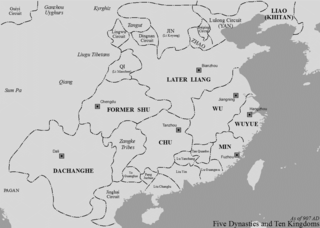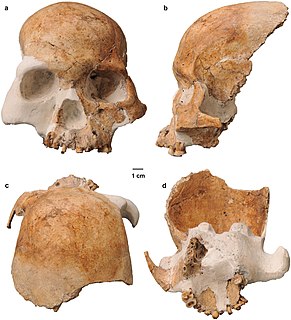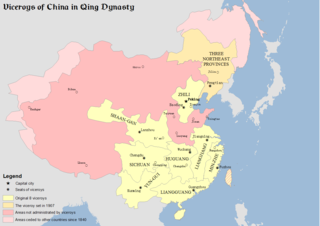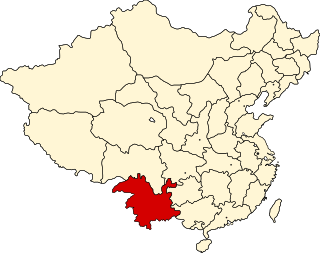 W
WThis article describes the history of Yunnan, currently a province of the People's Republic of China.
 W
WDachanghe or possibly Da Changhe was a kingdom from 902 to 928 in modern Yunnan, China. Founded by Zheng Maisi (鄭買嗣), it was the successor state of the Kingdom of Nanzhao (738–902), whose ruling Meng (蒙) family was mass-murdered in a bloody coup by Zheng. The Zheng family suffered a similar fate 26 years later at the hands of Yang Ganzhen (楊干貞), who helped found a state named Datianxing (大天興) (928–929).
 W
WDian was an ancient kingdom established by the Dian people, a group of indigenous non-Chinese metalworking tribes that inhabited around the Dian Lake plateau of central northern Yunnan, China from the late Spring and Autumn period until the Eastern Han dynasty. The Dian buried their dead in vertical pit graves. The Dian language was likely one of the Tibeto-Burman languages. The Dian were gradually displaced and assimilated into Han Chinese culture as the Han dynasty expanded towards what is now Yunnan. The Han Empire's annexation of the Dian Kingdom in 109 BC eventually led to the establishment of the Yizhou commandery.
 W
WThe Gouding (句町) Kingdom lasted approximately 400 years, from 111 BC to 316 AD, and was centered on Guangnan County in modern Wenshan Zhuang and Miao Autonomous Prefecture, Yunnan province, China.
 W
WThe Red Deer Cave people are a prehistoric archaic human population. Fossils dated to the Bølling-Allerød warming, between about 14,500 to c. 11,500 years ago, were found in Red Deer Cave and Longlin Cave, Yunnan Province, in Southwest China.
 W
WThe Tea Horse Road or chamadao, now generally referred to as the Ancient Tea Horse Road or chamagudao was a network of caravan paths winding through the mountains of Sichuan, Yunnan and Tibet in Southwest China. This was also a tea trade route. It is also sometimes referred to as the Southern Silk Road or Southwest Silk Road, and it is part of a complex routes system connecting China and South Asia.
 W
WTusi, often translated as "headmen" or "chieftains", were hereditary tribal leaders recognized as imperial officials by the Yuan, Ming, and Qing dynasties of China, and the Lê and Nguyễn dynasties of Vietnam. They ruled certain ethnic minorities in southwest China and the Indochinese peninsula nominally on behalf of the central government. This arrangement is known as the Tusi System or the Native Chieftain System. It should not to be confused with the Chinese tributary system or the Jimi system.
 W
WThe Viceroy of Yun-Gui, fully referred to in Chinese as the Governor-General of Yunnan and Guizhou Provinces and the Surrounding Areas Overseeing Military Affairs and Food Production, Director of Civil Affairs, was one of eight regional viceroys in China proper during the Qing dynasty. The Viceroy controlled Yunnan and Guizhou (Kweichow) provinces.
 W
WThe Yunnan clique was one of several mutually hostile cliques or factions that split from the Beiyang Government in the Republic of China's warlord era. It was named for Yunnan Province.
 W
WYunnan refers to the former province of the Republic of China controlling Yunnan. It was one of the 22 provinces set up during the Qing Dynasty. As one of the 6 provinces in South China, the territory it administers was slightly larger than the present-day Yunnan Province.
 W
WYunnan under Ming rule saw the continuation of the tusi system instituted during the Yuan dynasty, increasing centralization, and Han migration into Yunnan.
 W
WZiqi was a kingdom established by the Wuman in southwestern China during the Song dynasty. The territory of Ziqi included parts of modern-day Guizhou, Guangxi and Yunnan provinces of China.